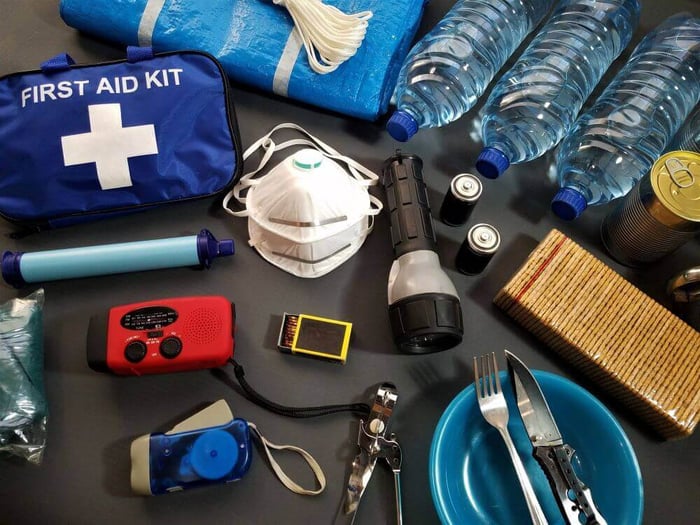Caring for an older loved one is one of life’s most meaningful callings—but also one of its toughest. It requires patience, compassion, and often a fair bit of improvisation. Yet, for all the daily challenges caregivers face, few things compare to the pressure of handling an emergency. A sudden fall, a heart attack, a power outage during a heatwave—each moment demands quick thinking, calm action, and an emergency preparation plan already in place.
Unfortunately, far too many caregivers and older adults are caught unprepared when disaster strikes. An extract from a University of Michigan poll presents some chilling statistics:
“Less than half have signed up for emergency warning systems offered by their community, which can give crucial information in case of storms, natural disasters, lockdowns, evacuation orders, public health emergencies and more.
Less than a third have put together an emergency kit with essential supplies and medicines to get them through an emergency at home or take with them in an evacuation. And only a quarter of those who rely on electrical power to run health-related equipment have a backup power supply.”
When seconds count, that lack of emergency preparation can make all the difference. Planning ahead can dramatically reduce the stress that caregivers routinely face. A good emergency plan doesn’t just protect your loved one—it also gives you a roadmap, helping you act decisively when emotions run high. As the old saying goes, “An ounce of prevention is worth a pound of cure.” In caregiving, that ounce can save a life.
Common Types of Emergencies Caregivers May Face
Emergencies come in many forms, and each one tests a caregiver in different ways. Understanding the most common types can help you prepare for what’s most likely to occur.
Medical Emergencies
These are the most frequent and potentially the most frightening. A heart attack, stroke, or fall can happen without warning, and recognizing the signs early is critical.
- Heart attacks often present as chest pressure or pain radiating to the arm, jaw, or back, sometimes accompanied by sweating or shortness of breath.
- Strokes may start suddenly with numbness, slurred speech, or facial drooping—but sometimes warning signs like dizziness or temporary vision problems appear days before.
- Falls remain the leading cause of injury among older adults in the U.S., accounting for more than 40 ,000 deaths in 2023 according to National Safety Council statistics.
For each of these, fast response is vital. Caregivers should keep emergency numbers visible, learn basic first aid, and have a clear system for notifying help—whether that’s a medical alert device, phone speed dial, or voice assistant command.
Environmental Emergencies
From wildfires to hurricanes, the past few years have shown how unpredictable nature can be. Environmental emergencies include:
- Severe weather (heatwaves, blizzards, floods)
- Power outages (which can cut off essential medical devices or climate control)
- Fires or gas leaks
Older adults are particularly vulnerable during such events. Those with limited mobility or cognitive decline may not be able to react quickly, and life-saving medical devices may depend on electricity. Experts recommend keeping a portable backup power source and at least a week’s supply of medication and water.
Behavioral or Cognitive Emergencies
For individuals with Alzheimer’s or other forms of dementia, crises aren’t always physical. Agitation, confusion, or sudden aggression can pose serious risks. In such cases, the key is prevention and de-escalation.
Emergency preparation involves keeping environments calm and familiar, avoiding sudden changes in routine, and maintaining updated medical and behavioral notes. If episodes become frequent, it may be time to consult a healthcare provider or pursue caregiver training from resources such as the Family Caregiver Alliance or the National Institute on Aging.
Building an Emergency Plan That Works
Emergencies thrive on chaos—but a plan helps you rise above it. Here’s how to create one that’s both thorough and practical.
Identify Potential Risks
Start with what’s most likely where you live and for your loved one’s condition. A senior in Florida faces different risks than one in Minnesota. Likewise, someone with heart disease may need a very different response plan than someone with dementia. List possible emergencies—medical, environmental, and behavioral—and rank them by urgency and likelihood.
Build an Emergency Contact Network
Every second counts during an emergency. Keep an updated list of key contacts:
- Primary care physician
- Nearest hospital or urgent care
- Close family or friends
- Neighbors who can help quickly
- Local emergency services (including non-emergency police or fire numbers)
Store this list in multiple places—on the fridge, in your phone, and inside your loved one’s wallet or medical alert bracelet.
Create a Comprehensive Emergency Kit
This should include:
- Copies of medical records, prescriptions, and insurance cards
- A minimum seven-day supply of medications
- Water (one gallon per person per day) and non-perishable food
- Flashlight, batteries, and a portable phone charger
- Basic first aid supplies
- Comfort items such as blankets, hearing aids, or glasses
If your loved one uses incontinence or mobility products, consider setting up an Autoship order to ensure supplies never run out. LL Medico offers dependable delivery for adult diapers, diabetic supplies, nutritional supplements, and other essentials, giving you one less thing to worry about during an emergency.
Establish Evacuation Routes and Safe Zones
Identify at least two exit routes from the home. If evacuation is necessary, choose a designated meeting place that’s easy for your loved one to recognize—like a neighbor’s porch or a nearby church. Practice evacuation drills twice a year. For those in wheelchairs or using walkers, ensure pathways are clear and accessible.
Address Special Needs
- Mobility impairments: Keep ramps, wheelchairs, and backup chargers ready.
- Hearing or vision impairments: Store written or visual instructions in large print or Braille.
- Cognitive decline: Use ID bracelets, GPS trackers, or photo ID cards to help locate wandering individuals quickly.
Review, Refresh, and Rehearse
A plan isn’t a one-time effort—it’s a living document. Review it at least every six months, or whenever your loved one’s health or living conditions change. Replace expired items in the emergency kit, and update phone numbers as needed.
Caring for the Caregiver
It’s easy to overlook your own needs when caring for someone else. But your ability to stay calm and think clearly during an emergency depends on your own well-being. Remember to rest, hydrate, and seek support. As caregiving researcher Rosalynn Carter once said, “There are only four kinds of people in the world — those who have been caregivers, those who are caregivers, those who will be caregivers, and those who will need caregivers.” In other words, you’re part of a vast community, not alone in this.
Conclusion
Emergencies will never announce their arrival. But preparation turns panic into action, confusion into clarity, and fear into focus. Take time today to assemble a plan, build your kit, and review your contacts. Your future self—and your loved one—will thank you. With foresight, compassion, and a good checklist, even the most chaotic moments can be handled with calm confidence.
If you need supplies or advice on incontinence, mobility, or wellness products, contact LL Medico today at (855) 422-4556 or email support@llmedico.com. Our experienced team is always ready to assist and help you stay prepared for whatever tomorrow brings.







 855-422-4556
855-422-4556 Chat
Chat E-Mail
E-Mail Monday - Friday 9:00AM to 5:00PM EST
Monday - Friday 9:00AM to 5:00PM EST





 Shopping With LL Medico
Shopping With LL Medico
 855-422-4556
855-422-4556